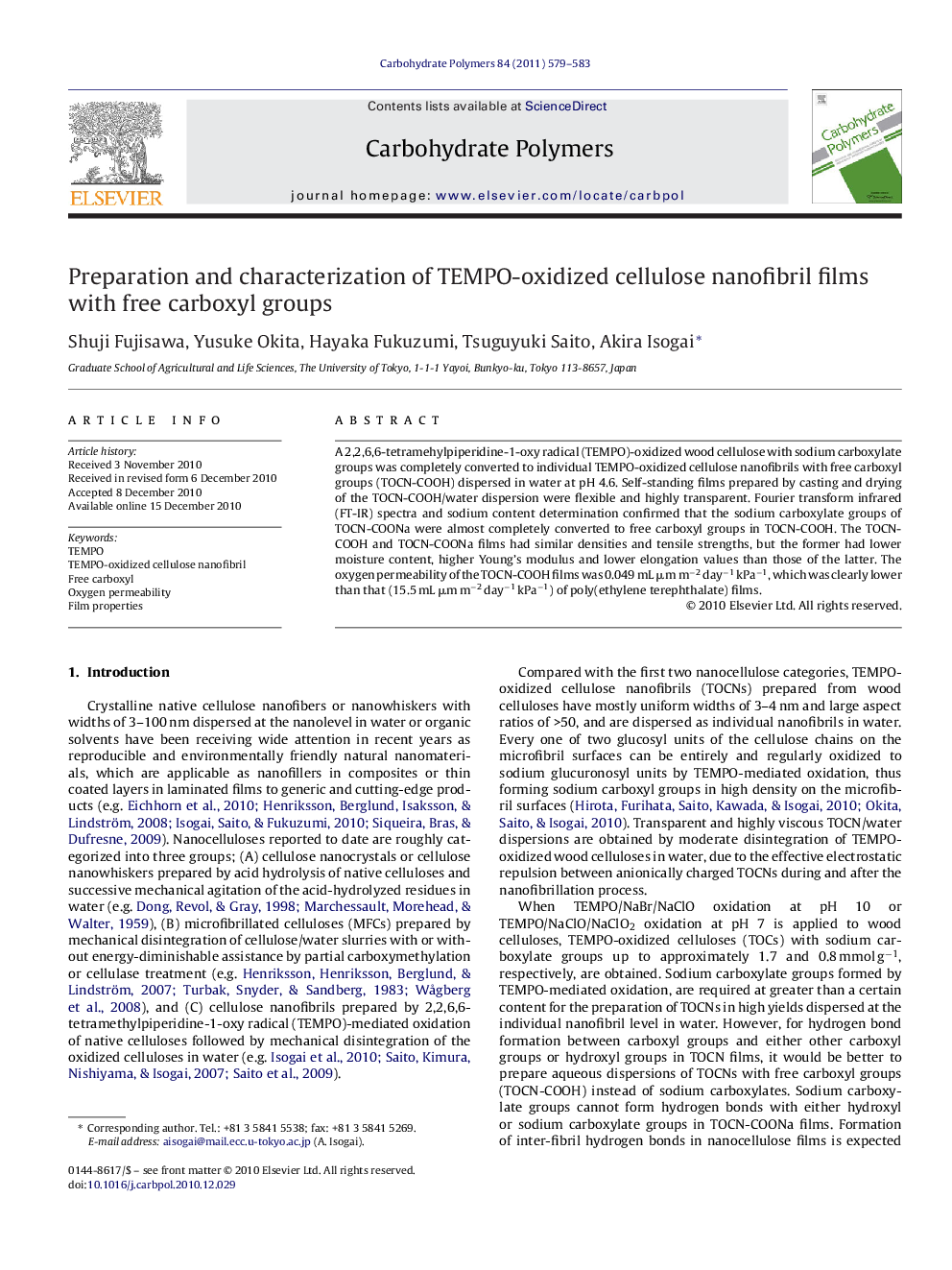| Article ID | Journal | Published Year | Pages | File Type |
|---|---|---|---|---|
| 10604743 | Carbohydrate Polymers | 2011 | 5 Pages |
Abstract
A 2,2,6,6-tetramehylpiperidine-1-oxy radical (TEMPO)-oxidized wood cellulose with sodium carboxylate groups was completely converted to individual TEMPO-oxidized cellulose nanofibrils with free carboxyl groups (TOCN-COOH) dispersed in water at pH 4.6. Self-standing films prepared by casting and drying of the TOCN-COOH/water dispersion were flexible and highly transparent. Fourier transform infrared (FT-IR) spectra and sodium content determination confirmed that the sodium carboxylate groups of TOCN-COONa were almost completely converted to free carboxyl groups in TOCN-COOH. The TOCN-COOH and TOCN-COONa films had similar densities and tensile strengths, but the former had lower moisture content, higher Young's modulus and lower elongation values than those of the latter. The oxygen permeability of the TOCN-COOH films was 0.049 mL μm mâ2 dayâ1 kPaâ1, which was clearly lower than that (15.5 mL μm mâ2 dayâ1 kPaâ1) of poly(ethylene terephthalate) films.
Related Topics
Physical Sciences and Engineering
Chemistry
Organic Chemistry
Authors
Shuji Fujisawa, Yusuke Okita, Hayaka Fukuzumi, Tsuguyuki Saito, Akira Isogai,
